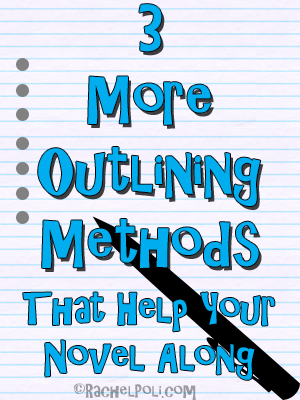3 More Outlining Methods That Help Your Novel Along
I love to stress outlining on my blog because in my experience writers have an easier time and do better work when they prepare in advance. This is why I wanted to refer you to Rachel Poli’s posts. The more options you become aware of, the more flexibility you have.
I use a number of different methods, including simple brainstorming, where I write down ideas for a story and then organize them later. I combine methods and sometimes write from a partial outline and then develop the outline further as I’m writing.
(I’m including the link to Rachel’s second installment because it links back to the first. This gives you access to both parts.)
Yesterday we touched upon four outlining methods for your novel. I decided to split the post up because there are three more ways to outline.
These are the ways I outline my own novel.
 Summary
Summary
This method is pretty straight forward. You write a basic synopsis for your novel. Play around with various summaries for your story.
Write a one-sentence summary. Write a paragraph summary. Write a whole page summarizing the novel.
Summarizing gives you a good idea about what you want the point of the story to be and allow you to think about how you want to get there.
Of course, it’s sometimes easier to write a summary for your story after you’ve finished the novel. So take this one as you will.
How I use this method:
Similar to the free writing from yesterday’s post, I tend to babble out the beginning, middle, and end of my…
View original post 466 more words


Wind Eggs
As much as I admire Plato I think the wind eggs exploded in his face and that art and literature have more to tell us, because of their emotional content, than the dry desert winds of philosophy alone. ...more
- Phillip T. Stephens's profile
- 31 followers




